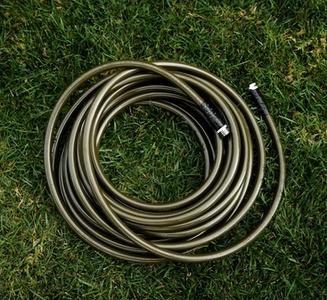Spring
As the ground begins to thaw and you prepare for your first mow, it’s a good time to dust off your mower and give it an inspection before firing it up.
- Change oil and add fresh, ethanol-free fuel
- Clear grime from the fuel filter that could clog things up
- For electric mowers, charge the battery
- Make sure blades are sharp and clean
- Check tire pressure and fill or replace as needed
- Use a mower height chart to adjust height for grass
- Check drive belts for cracks or worn spots
- Remove old grass clippings or build-up
Summer
As you move into the full swing of the mowing season, it's a good time to refresh your memory on the dos and don'ts of mowing. You can also keep an eye on how your mower runs. Do you notice difficulty steering or an uneven cut? Is your mower harder to push than you remember? You may need to adjust the air levels in your tires, or sharpen your mower’s blades to keep things moving. Mowing too low or cutting with dull blades can cause “tearing.” This can shock and damage your grass, leaving it vulnerable to disease and water loss.
- Keep up lawn care basics and set your mowing height high
- Only mow down to about 3–3 ½ inches
- Don't cut more than ⅓ of your grass blade length at one time
- Mow a dry lawn to avoid clogs from wet grass
- Change oil every ~100 hours of use
- Follow owner’s manual for appropriate charging and refuel
- Sharpen blades every 25 hours of use for efficiency
- Tighten up loose wheels or fasteners
- Fill tire pressure if necessary
Fall
With autumn comes crisp air and, in many places, falling leaves. Here's what you can do to help prepare your grass to head into the dormant season.
- Practice good fall lawn care and reduce mowing
- Gradually lower mower height without taking off more than ⅓ of grass
- Check oil levels and oil age
- If leaf cover is light, mow to "mulch" the leaves for your lawn
- If leaves fully cover grass, remove some to avoid smothering
- Add excess leaves to garden beds
- Mow leaves when they're dry to avoid clumping
Winter
There are a few things to do before you stow away your mower for winter. For starters, it’s a good time to make any lawn mower repairs and winterize your sprinkler. It's also a good time to clean things out and sharpen your blades. This helps make sure everything is in tip-top shape and ready to go in the spring.
- Run your engine to make sure there’s no fuel left
- Clear out leaves and debris from the bottom
- Clean battery terminals in electric mowers
- Remove spark plug
- Squirt oil inside spark plug hole to lubricate cylinder
- Clean blade with solvent or oil instead of water, which can cause rust
- Sharpen blade until blade is 1/32 of an inch, not razor’s edge
- Complete any necessary mower repairs
- Take out the battery to store in a dry place
- Store your mower in a dry, covered area
Cited sources
Garner, M. The 10 Steps of Lawn Mower Maintenance. Alabama Cooperative Extension.
Melgares, P. Service mower before putting it away for the year. Kansas State Research and Extension.
Bauer, S. Mowers and mowing safety. University of Minnesota Extension.
Perry, L. Fall lawn care. Department of Plant and Soil Science, University of Vermont.
Johnson, K. Using fallen leaves. University of Illinois Extension.



















